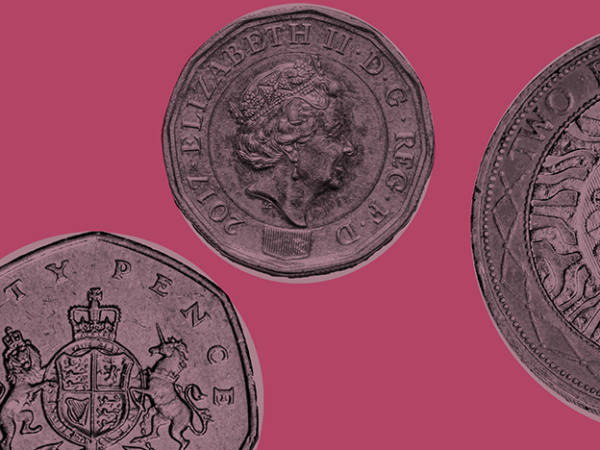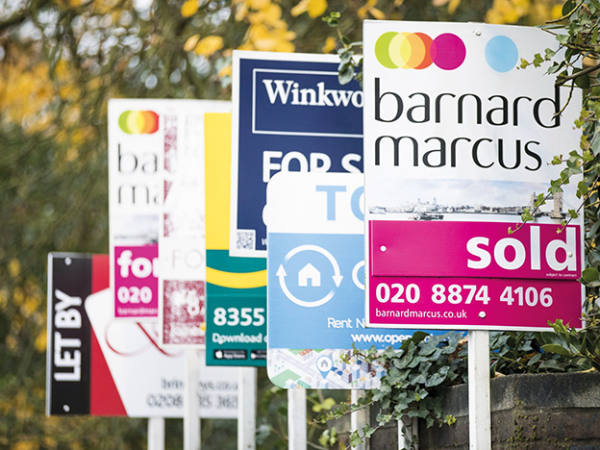James Lovelock, he who – in a sense – started it all with his concept of Gaia, summed up the climate-change movement, and the response to it, some 15 years ago. “We live at a time when emotions and feelings count more than truth and there is a vast ignorance of science,” he wrote in his book, The Revenge of Gaia.
Perhaps it was ever thus. Even so, if that sentiment were true back in 2006, think how much more so it is today; now that humankind, for good or ill, has released a further 500bn tonnes of CO2 or thereabouts into the atmosphere and atmospheric concentrations of CO2 have risen, say, a further 7 per cent as a result.
Today, eco-fundamentalism rules in part because belief has been transformed into fact, but also because the true believers are aided and abetted by an army of fellow travellers, many of whom are in the camp because they sniff the stench of money to be made on the pathway to what is rather laughably called ‘net zero’.
Starting Sunday, we are in for 12 days of this in concentrated form from the believers and their cynical friends as COP26 – the 2021 United Nations Climate Change Conference – kicks off. Sure, much of it will be hard to bear; in particular, the prospect of being lectured to by a procession of Greta Thunberg think-alikes. They will tell us this really, really is the last chance to avoid climatological apocalypse; whereas six years ago COP21, the predecessor conference in Paris, was just the last chance and, therefore, not so important.
Even now, we can predict with confidence that COP26 will end with brave statements and even braver promises, which might even be legally binding (technically, at any rate). No matter that nations have not even come close to meeting the voluntary commitments to reduce CO2 emissions they made in Paris, Glasgow is where it gets serious; or that’s how the rhetoric will go.
Yet, if nothing else, COP26 – and the surrounding debate – will focus attention onto issues that won’t go away, such as:
● That the developed world does not understand the developing world’s priorities;
● That the real costs of getting the UK to net zero must be addressed;
● That the UK’s power-generating industry – and especially its electricity grid – is not up to the task of transitioning to net zero.
True, these are mostly depressing subjects. So, rather than concentrate on them, and especially for investors who fear what the war on CO2 emissions will do both to their bank balance and their portfolio, there is – tangentially, at least – some good news. Exchange traded funds provider WisdomTree has launched a fund to track the price of carbon. Appropriately named WisdomTree Carbon, it trades on the London market both in US dollar form (CARB) or sterling denominated (CARP).
As such, its aim, its name and its codes are the same as WisdomTree used for a near-identical exchange traded fund (ETF) that it liquidated last year. The chief change is that the revised ETF tracks a different index – the Solactive Carbon Emissions Allowances Rolling Futures Total Return Index. In turn, that tracks a rolling price for one-month futures contracts for allowances for the European Union’s Emissions Trading System as traded on London’s ICE Futures Europe exchange.
The chief fault of the EU’s cap-and-trade scheme was that in its early days it was more like a don’t-cap-so-no-need-to-trade scheme. Its allowances were too generous and the price of emitting 1 tonne of CO2 continuously remained below €10 from late 2011 until early 2018; this at a time while economists were adamant that the price needed to be above €40 and climbing for the scheme to have the desired effect. That was then. But since the price of allowances crossed the €10 mark in March 2018 there has been little looking back and this autumn – to great excitement – it went through €60 for the first time.
The widespread presumption is that the price must only rise as emissions reduction gets more serious. Within the EU, the scope of cap-and-trade remains limited to energy generators, most of heavy industry and airline flights within EU territory. Most likely that must widen. Meanwhile, around the globe similar cap-and-trade schemes have been introduced, the most recent – and most ambitious – of which is in China.
Granted, it does not have to be like this. On another view, cap-and-trade will give way to carbon taxes as a more efficient way to squeeze emissions. In which case, carbon allowances will waste away. Yet, while taxation will be a more efficient way of achieving CO2 cuts, it is also less acceptable to voters since taxes – both direct and indirect – are always unpopular with those who pay them. Thus, at the very least, a cap-and-trade system is odds-on to remain an important tool for reducing emissions.
Simultaneously, there is the notion that emissions allowances are a good asset to have in a diversified portfolio since their price changes have limited correlation with price movements for equities and bonds. Although the EU’s trading system has been around since 2005, there is limited information to justify this notion. The snag is that for much of their trading life time, as just mentioned, allowances prices have done very little – equity prices rose, but the price of allowances just drifted; equity prices fell, but allowance prices continued to drift. That may give the appearance of providing good volatility reduction, but it’s risk reduction by coincidence rather than by logic. In practical terms, it would be logical to link the price of allowances to economic activity. So, as demand for goods rises, demand also rises for the allowances that permit the emissions made in producing goods or, in the case of airlines, in providing the services.
However, for the average private investor, the reason to include emissions allowances in a portfolio goes beyond investing. Private investors are consumers and tax payers, too. So the underlying reason to hold allowances is that there is a good chance the gains they provide will offset some of the extra costs consumers will bear as the developed world pursues its crusade to net zero.
The table shows the gains that have been captured lately. It uses data from the IHS Markit Global Carbon Index, which is priced in US dollars. It is a composite index of five cap-and-trade systems, of which, by far the most important is the EU’s scheme, with a 67 per cent weighting, followed by 16 per cent for California’s equivalent programme. The table’s lower rows show how spectacular the recent performance has been. Even over the past year, the index level has doubled and is up 69 per cent in 2021 alone.
| IHS Markit Global Carbon Index | |||
|---|---|---|---|
| Period | Total Return Index | Weighted Carbon Price ($) | Total Return (%) |
| Latest | 586.45 | 40.69 | |
| 1 Day | 579.84 | 40.23 | 1% |
| 1 week | 569.81 | 39.53 | 3% |
| 2 weeks | 566.79 | 39.32 | 3% |
| 1 month | 586.75 | 40.69 | 0% |
| 3 months | 486.38 | 33.71 | 21% |
| 6 months | 448.72 | 31.07 | 31% |
| YTD | 347.82 | 24.05 | 69% |
| 1 year | 286.19 | 19.67 | 105% |
| 2 years | 269.02 | 18.53 | 118% |
| 3 years | 226.67 | 17.26 | 159% |
| 4 years | 113.71 | 8.80 | 416% |
| 5 years | 85.07 | 8.11 | 589% |
| Source: IHS Markit | |||
As the wealth warnings say, past performance is no guide to the future and it would be foolish to imagine the carbon price will continue to surge at its recent pace. For private investors, that won’t necessarily matter. So long as the cost of de-carbonising their lifestyle continues to rise – and, most likely, the process has barely begun – it is fair to assume the price of carbon allowances will follow the same track. Admittedly, the carbon price will be much more volatile, but that’s the nature of wholesale market prices compared with the stodgy retail prices that consumers pay.
Meanwhile, perhaps the biggest threat to carbon prices is that consumers the world over will increasingly align themselves with the views that prevail in the developing world; views that will be aired in Glasgow in the coming days. What it boils down to is that for the middle classes of Mumbai and Hanoi climate change may be important, it’s just that other things are more important.
When the United Nations conducted its MyWorld 2030 poll, it asked 500,000-plus respondents to rank the importance of the its own 17 sustainable development goals. While, for example, respondents in Sweden (per capita income $53,000) ranked ‘climate action’ the most important, those in China (per capita income $16,000) ranked it a lowly 15th. Okay, one might speculate that those two rankings were heavily influenced by Greta-Thunberg thought versus the rather better known Xi-Jinping thought. But the serious point is that among developing nations overall, climate action was only ranked 9th in the list. The top three goals were taken by ‘good health and well-being’, ‘decent work and economic growth’ and ‘quality education’.
Interestingly, those three are middle-class goals to the core the world over. Quite likely, the affluent folk of Stockholm only rank climate action so highly because they take for granted the utilities and services that far greater numbers in the developing world still aspire to. Yet if push comes to shove, one wonders about the commitment to – or should that be ‘grudging acceptance of’ – the climate-change agenda in the developed world. It seems perfectly plausible that the priorities of the voters behind Boris Johnson’s ‘blue wall’ are closer to those in up-town Beijing than those in the suburbs of Stockholm.
Whichever, the limits of tolerance will be tested in the coming years and toleration will correlate inversely with energy crises. Put more simply, as the cost of cutting carbon emissions increases, willingness to pay the price will waver, especially as the price includes inconvenience and, for a few, misery.
Granted, it is self-evident, to use the phrase of Steve Baker MP, that the UK’s government is winging it over the costs – and even the means – of getting to net zero. Similarly, every one intuitively knows that net zero will be an illusion achieved by a combination of emissions offsets that may or may not crystallise sometime in the future and of accounting trickery. For example, it remains the case that, in calculating net zero, it is unclear who should be credited with an emissions offset – the party avoiding the emission or the party buying the credit.
Good luck sorting out that one. Meanwhile, the hope is that with their own stash of carbon allowances – or at least the equivalent – investors will feel more philosophical about these things. Not that they should go overboard. All the book profits from allowances and more might easily be absorbed by the cost of installing a noisy heat pump that won’t even get your home warm, however efficiently it converts energy into tepid heat. And even if it did, the electricity grid would fail as the temperature drops and demand surges. Happy days to come.











